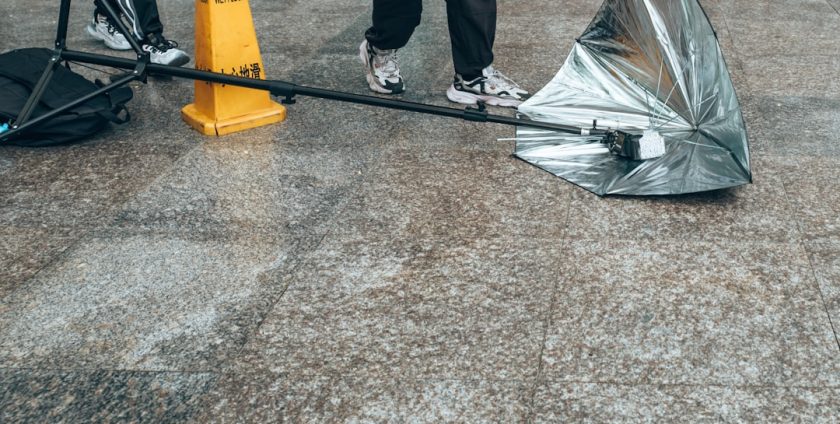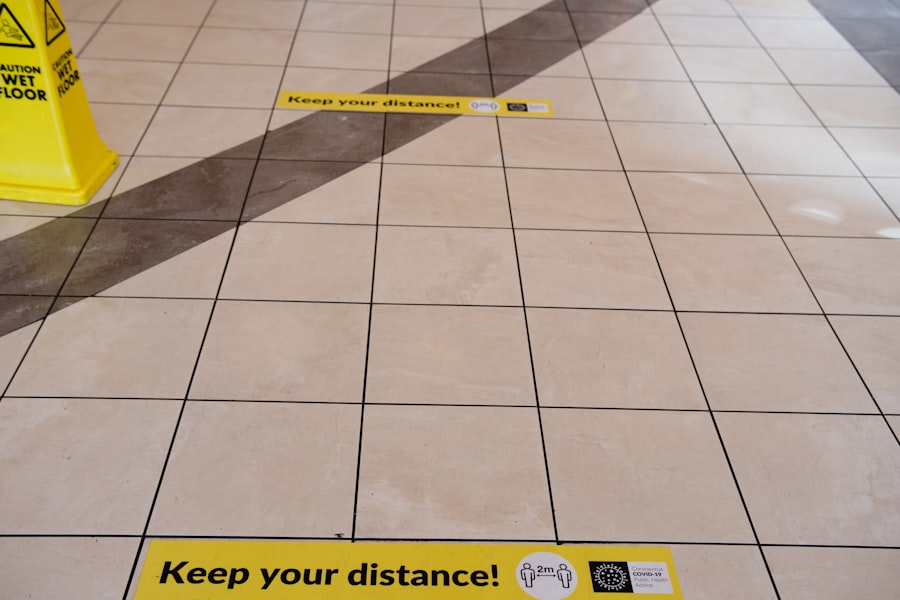
- By: admin
- Category: Commercial Floor Cleaning Machines
- 0 comment
A floor scrubber is a vital piece of equipment in the commercial and industrial cleaning sector, designed to efficiently clean and maintain hard floor surfaces. Unlike traditional mopping methods, which can leave behind residue and require significant manual effort, floor scrubbers automate the cleaning process, ensuring a more thorough and consistent clean. These machines utilise a combination of water, cleaning solution, and mechanical scrubbing action to remove dirt, grime, and stains from various types of flooring.
The operation of a floor scrubber is relatively straightforward. The machine dispenses a mixture of water and detergent onto the floor while simultaneously scrubbing the surface with rotating brushes or pads. As the scrubber moves forward, it vacuums up the dirty water, leaving the floor clean and dry.
This dual-action process not only enhances cleaning efficiency but also reduces the time and labour required for floor maintenance, making it an indispensable tool for contract cleaners, building managers, and facility managers alike. Please feel free to get in touch with us through our Contact Us page.
Summary
- A floor scrubber is a machine used to clean and scrub floors, typically using a combination of water, detergent, and brushes or pads to remove dirt and grime.
- There are different types of floor scrubbers available, including walk-behind, ride-on, and robotic models, each with their own unique features and benefits.
- The main benefits of using a floor scrubber include improved cleaning efficiency, reduced labour costs, and a more hygienic and safe working environment.
- When choosing the right floor scrubber for your needs, consider factors such as the size of the area to be cleaned, the type of flooring, and any specific cleaning requirements.
- Maintenance and cleaning tasks involved in owning a floor scrubber include regular cleaning of the machine, checking and replacing brushes or pads, and ensuring proper storage and maintenance of batteries or power sources.
What are the different types of floor scrubbers available?
Floor scrubbers come in various types, each designed to cater to specific cleaning needs and environments. The most common categories include walk-behind scrubbers, ride-on scrubbers, and robotic scrubbers. Walk-behind scrubbers are ideal for smaller spaces or areas with obstacles, allowing operators to manually guide the machine while enjoying the benefits of automated cleaning.
These models are often compact and easy to manoeuvre, making them suitable for tight corridors or small retail spaces. On the other hand, ride-on scrubbers are designed for larger areas, such as warehouses or shopping centres. Operators can sit comfortably while controlling the machine, which significantly reduces fatigue during extended cleaning sessions.
These scrubbers typically have larger tanks and wider cleaning paths, enabling them to cover more ground in less time. Lastly, robotic scrubbers are an emerging technology that utilises sensors and artificial intelligence to navigate autonomously around a space. While still relatively new to the market, they offer the potential for continuous cleaning with minimal human intervention, making them an exciting option for forward-thinking facilities.
What are the main benefits of using a floor scrubber?

The advantages of using a floor scrubber extend beyond mere convenience; they encompass efficiency, effectiveness, and cost savings. One of the primary benefits is the significant reduction in labour costs. By automating the scrubbing process, facilities can allocate their workforce to other essential tasks while ensuring that floors remain clean and presentable.
This is particularly beneficial in high-traffic environments where cleanliness is paramount for both safety and aesthetics. Moreover, floor scrubbers provide a superior clean compared to traditional methods. The combination of mechanical scrubbing and vacuuming ensures that dirt and contaminants are effectively removed from the surface, reducing the risk of slips and falls.
This is especially crucial in commercial settings such as hospitals or food processing plants, where hygiene standards are stringent. Additionally, regular use of a floor scrubber can prolong the life of flooring materials by preventing the build-up of grime that can lead to wear and tear over time.
How do I choose the right floor scrubber for my needs?
Selecting the appropriate floor scrubber for your facility requires careful consideration of several factors. First and foremost, assess the size and type of area you need to clean. For smaller spaces with numerous obstacles, a walk-behind model may be more suitable due to its manoeuvrability.
Conversely, if you manage a large warehouse or retail space, a ride-on scrubber could be more efficient in covering vast areas quickly. Another critical aspect to consider is the type of flooring you will be cleaning. Different surfaces may require specific brushes or pads to avoid damage while achieving optimal cleanliness.
For instance, softer pads may be necessary for polished floors to prevent scratching, while more aggressive scrubbing pads might be needed for textured surfaces that trap dirt. Additionally, consider your budget and maintenance capabilities; some models may have higher upfront costs but offer long-term savings through durability and lower operational costs.
What maintenance and cleaning tasks are involved in owning a floor scrubber?
Owning a floor scrubber entails regular maintenance to ensure optimal performance and longevity. One of the most crucial tasks is routine inspection of the brushes or pads. Over time, these components can wear down or become clogged with debris, reducing their effectiveness.
Regularly replacing or cleaning these parts will help maintain the machine’s scrubbing power. Furthermore, it is essential to keep the water tanks clean and free from contaminants. After each use, emptying and rinsing out both the solution tank and recovery tank will prevent any build-up of bacteria or unpleasant odours.
Additionally, checking hoses for leaks or blockages can prevent operational issues down the line. By adhering to these maintenance practices, facility managers can ensure their floor scrubbers remain in peak condition, ultimately enhancing their cleaning capabilities.
What safety precautions should I take when using a floor scrubber?

Safety should always be a top priority when operating any cleaning equipment, including floor scrubbers. One of the primary precautions is ensuring that all operators are adequately trained in using the machine. Familiarity with controls, safety features, and emergency shut-off procedures can significantly reduce the risk of accidents.
Additionally, it is vital to assess the area before commencing cleaning operations. Look out for potential hazards such as loose cables or uneven flooring that could pose a risk during operation. Using appropriate personal protective equipment (PPE), such as non-slip footwear and gloves, can further enhance safety while operating a floor scrubber.
Lastly, always ensure that warning signs are placed in areas being cleaned to alert pedestrians of wet floors or ongoing maintenance work.
Can a floor scrubber be used on different types of flooring surfaces?
One of the remarkable features of modern floor scrubbers is their versatility across various flooring surfaces. From concrete and tile to vinyl and hardwood, many machines are designed to adapt to different materials with ease. However, it is crucial to select the right type of brushes or pads based on the specific flooring type to avoid damage.
For instance, concrete floors often require more aggressive scrubbing pads to remove embedded dirt effectively, while softer pads are better suited for delicate surfaces like hardwood or laminate flooring. Additionally, some manufacturers offer adjustable settings that allow operators to modify water pressure and scrubbing intensity based on the surface being cleaned. This adaptability makes floor scrubbers an invaluable asset in diverse commercial environments.
What are the common troubleshooting issues with floor scrubbers and how can they be resolved?
Like any piece of machinery, floor scrubbers can encounter issues that may hinder their performance. One common problem is insufficient suction during operation, which can result from clogged hoses or filters. Regularly inspecting these components and ensuring they are clean can help maintain optimal suction power.
Another frequent issue is uneven cleaning results, which may stem from worn-out brushes or pads that no longer provide adequate scrubbing action. Regularly checking these components for wear and replacing them as needed will ensure consistent cleaning performance. Additionally, if you notice leaks from the solution tank or recovery tank, it may indicate damaged seals or hoses that require immediate attention.
In conclusion, understanding how to effectively utilise a floor scrubber can significantly enhance your facility’s cleaning operations. By selecting the right type of machine for your needs and adhering to proper maintenance practices, you can ensure optimal performance while maintaining safety standards across your workspace. **FAQs** 1.
**How often should I use a floor scrubber?**
The frequency of use depends on foot traffic levels and specific industry requirements; however, regular use—ideally daily or weekly—can help maintain cleanliness. 2. **Can I use any cleaning solution with my floor scrubber?**
It’s essential to use solutions recommended by the manufacturer to avoid damaging your machine or flooring.
3. **What should I do if my floor scrubber stops working?**
First, check for any obvious issues such as power supply or clogs; if problems persist, consult your user manual or contact a professional technician. 4.
**Are robotic floor scrubbers worth the investment?**
While they may have a higher initial cost, robotic scrubbers can save time and labour costs in large facilities over time. 5. **How do I know when to replace my floor scrubber?**
Signs include frequent breakdowns, diminished cleaning performance despite maintenance efforts, or if it no longer meets your facility’s needs effectively.
FAQs
What is a floor scrubber?
A floor scrubber is a machine used to clean and scrub hard floors. It typically consists of a motorized scrubbing brush or pad, a water tank, and a vacuum system to remove dirt and water from the floor.
How does a floor scrubber work?
A floor scrubber works by dispensing water and cleaning solution onto the floor, scrubbing the surface with a rotating brush or pad, and then vacuuming up the dirty water to leave the floor clean and dry.
What types of floors can a floor scrubber clean?
Floor scrubbers are designed to clean a variety of hard floor surfaces, including concrete, tile, vinyl, and hardwood. They are commonly used in commercial and industrial settings such as warehouses, factories, and retail spaces.
What are the benefits of using a floor scrubber?
Using a floor scrubber can save time and effort compared to traditional mopping methods. It can also provide a more thorough and consistent clean, and may help to extend the lifespan of the floor by removing dirt and grime that can cause damage over time.
How do I choose the right floor scrubber for my needs?
When choosing a floor scrubber, consider the size of the area to be cleaned, the type of flooring, and any specific cleaning requirements. Factors such as brush type, scrubbing width, and battery life should also be taken into account.
How do I maintain a floor scrubber?
Regular maintenance of a floor scrubber is important to ensure optimal performance. This may include cleaning the machine after each use, checking and replacing brushes or pads as needed, and performing routine inspections and servicing.
Are there any safety considerations when using a floor scrubber?
When using a floor scrubber, it is important to follow safety guidelines and use personal protective equipment such as gloves and safety shoes. Operators should also be trained in the proper use of the machine to prevent accidents and injuries.
